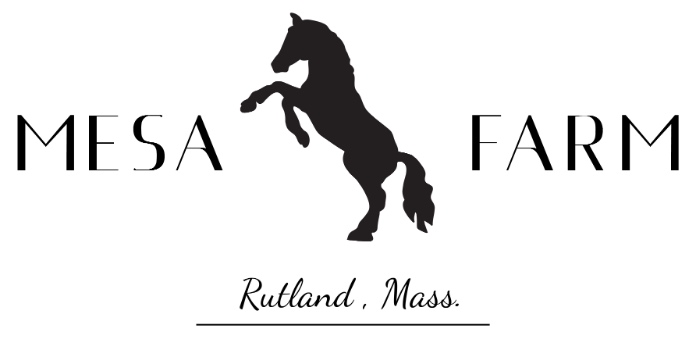Bloopie and Gypsy received extra attention today in the form of a good brushing. Horse hair has three parts to it’s life cycle; first it will be actively growing, then it will be resting, and third, it will loosen and fall out. Each can occur year-round, but primarily hair growth happens in the fall; and spring is when the hair loosens and sheds. A horse in the process of shedding might be itchy so we can reduce that with a good brushing and the best tool to free a horse of a spring coat that has loosened is with the shedding blade.
Rather than by temperature, horses hair growth is stimulated by the pineal gland’s reaction to the hours of daylight through the production of the hormone melatonin. More melatonin is produced in darker days which causes the hair to grow longer and thicker. Now that the daylight hours are getting much longer, this winter growth has loosened and is ready to fall, or be brushed, out.
A healthy horse should have a coat with a nice sheen to it, especially in the spring and summer when it is short. A dull coat might mean that nutrition, parasites, a fungus, or sun and exposure are affecting it. Exercise will promote a healthy coat, but if a horse sweats a lot and the sweat isn’t washed off the salts produced will dull the coat.
Brushing removes dust and helps spread natural oils from the horses skin to make the hair clean and shiny; we generally start with the curry brush in a circular pattern tp loosen dust and dirt, followed by a bristle brush to remove the dust and dirt and to bring out the oils. We groom our horses before we ride them for their skin and coat natural health, but also to make sure they don’t have dirt, mud or anything that might chaffe the skin when the saddle or girth is put on. Brushing before riding also helps the horse feel comfortable and relaxed and gives us a chance to notice any cuts, injuries or potential skin or other health problems that the horse may have.
Older horses (considered late teens and over) especially can have health issues that their coats reveal. Cushings disease (it has a longer, scientific name) is a common one and is the result of the pituitary gland enlarging and in turn affecting the production of several hormones in the horse. It is very common in horses and there is no cure but there are several medications (each with side effects) and preventive steps that can help manage it. Testing for it has mixed results, but you can often assume an older horse has it to some degree, especially if they shed their “cat hairs” under their chin and belly last; and sometimes a horse with Cushings disease doesn’t shed at all.
Our other horses are also shedding, but Bloopie and Gypsy’s age means their homones are probably affecting them the most and is why they generally have the most hair and seem to be losing it all the time; especially in the spring. This is the hair that came off easily today; the rest of their long hair coat should loosen over the next few weeks and also come off naturally or we’ll help brush it off. By mid-May all the horses should have smooth and shiny hair coats.
I am happy to see that Bloopie has gained some weight over the winter. We were concerned about him last summer and fall as his body condition was deteriorating and he not only lost weight but had some painful digestive issues caused by ulcers. The molar teeth of Bloopie and Gypsy, like most older horses, has worn down to where they cannot chew on hay enough to break it down to digest it so the two of them get fed a “senior” feed that is mostly pelleted and ground up hay which I then soak in water so they are really just eating a “mush”. They get fed four times a day. But since the horses stomach is designed to have food in it almost all the time, and the “mush” is digested quicker than course hay, Bloopie developed ulcers because there wasn’t enough food in his stomach to neutralize the amount of acid his stomach was producing. He responded well to the ulcer medication and now is on a preventative ulcer supplement.
Hormonal issues, rough hair coats, bad teeth, ulcers, and arthritis (which I haven’t even mentioned yet) and other medical issues… horse or human… It’s tough to get old. But like with people, exercise, proper nutrition, some mental stimulation and an appropriate work load can all help keep an old horse comfortable and I think Gypsy and Bloopie still have a pretty good quality of life. We don’t know exactly how old Boopie is, but he’s lived at Mesa Farm almost 20 years so we think he is about 30 years old. Gypsy was born on my parent’s farm, and we know she’ll turn 37 next month.
First and second photos: Bloopie, “before” and “after” being groomed.
Third and fourth photos: Gypsy, “before” and “after” being groomed.
They will both continue to shed, but you can see what was brushed off Gypsy in the empty stall behind her and Bloopie’s shedded hair pile is on the floor beside him.

